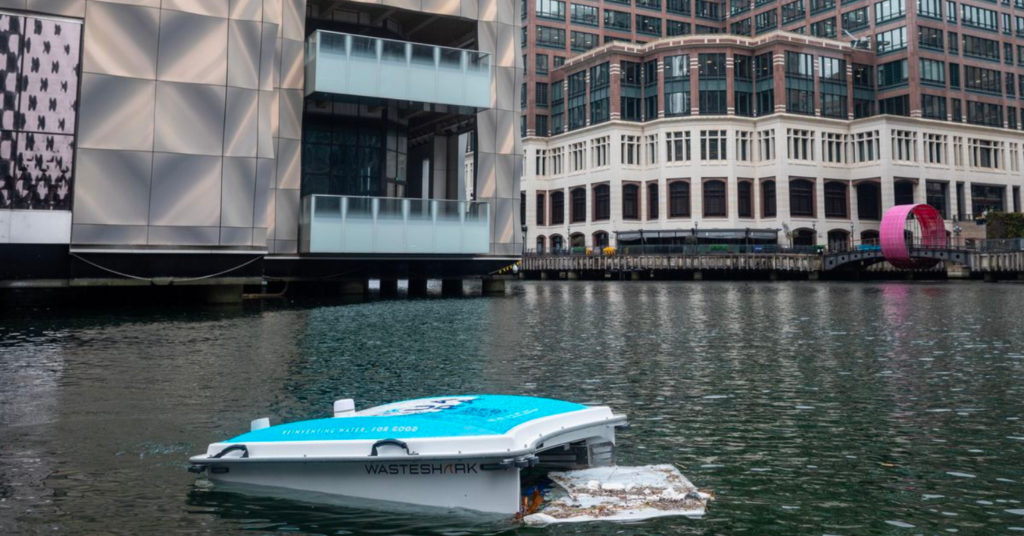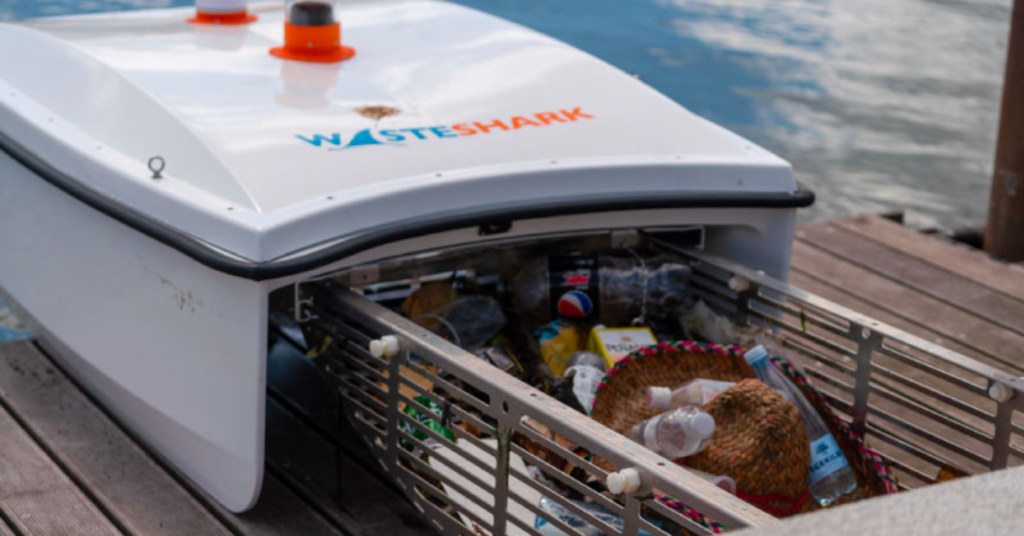This innovative water-cleaning robot can collect up to 21,000 plastic bottles in just one day.

Have you ever seen a shark in a river or canal? You might soon – but it won’t be a predator looking for prey.
It’s WasteShark, an autonomous water-cleaning robot (inspired by the whale shark’s mouth) designed to scoop up plastic waste and other debris from the surface of rivers and other waterways.
The WasteShark was created by Richard Hardiman, founder of Cape Town-based company Ran Marine, after he saw two men struggling to catch rubbish from their boat.
The robot shark is completely electric and is so quiet it doesn’t disturb wildlife.
It’s designed to have zero impact on the environment, unlike some boats that go out and clean that are typically diesel-powered or mechanically powered, releasing oil and pollution into the water while cleaning.

The WasteShark is battery-powered and can travel up to 5km on one battery, which amounts to around 8-10 hours of cleaning time.
The robot can consume around 500kg of debris or the equivalent of 21,000 plastic bottles in a day. Any rubbish collected in the robot’s belly is then brought back to shore, sorted, and recycled or disposed of responsibly.

In addition to cleaning up plastic pollution, WasteShark also collects water quality data from all around the world. The data is used to determine whether the water is getting cleaner, changing, or experiencing potential algae blooms.